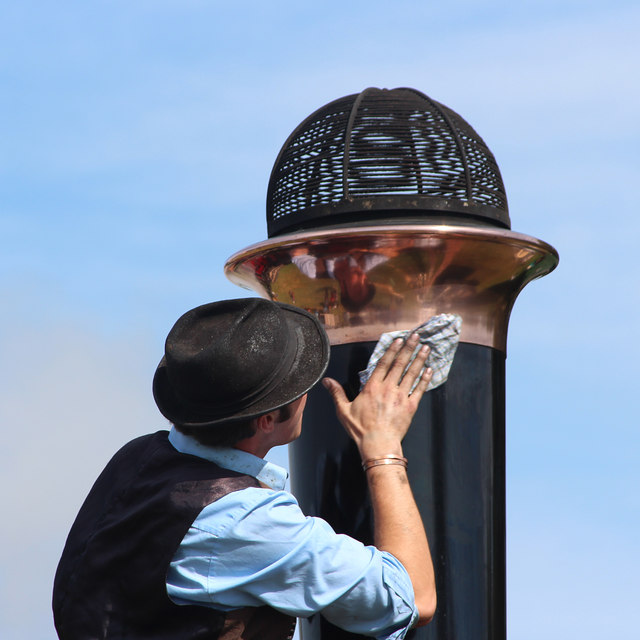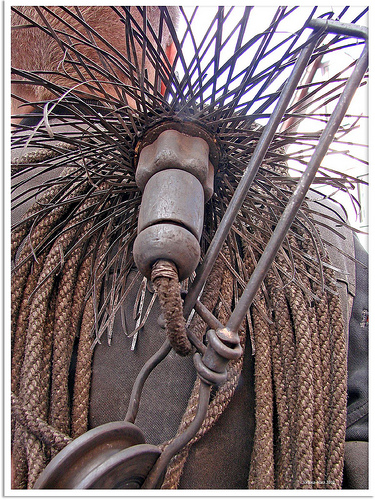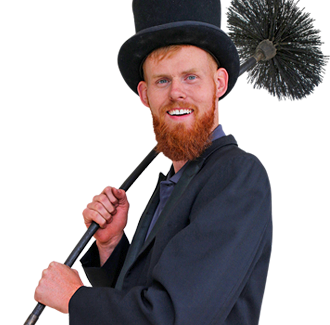Five Things you May Not Know About Chimney Sweeps
 Chimney sweeps have been around for centuries, though the profession is profoundly different today than in the beginning. Cleaning sooty chimneys may not seem to be a job that would have a rich history, but it does. There is good and bad in the chimney sweep saga; but, arguably, very little about it is dull. The following are five little known facts about chimney sweeps.
Chimney sweeps have been around for centuries, though the profession is profoundly different today than in the beginning. Cleaning sooty chimneys may not seem to be a job that would have a rich history, but it does. There is good and bad in the chimney sweep saga; but, arguably, very little about it is dull. The following are five little known facts about chimney sweeps.
Chimney Sweep Celebrations Include Jack-in-the-Green
In the long ago history of chimney sweeps, the children who were used to climb and clean chimneys had only one day off every year, which was May Day. Jack-in-the-Green has traditionally been a part of the celebration of the arrival of spring on May Day, including for chimney sweeps. Even today, at an annual festival in England celebrating Chimney Sweeps, a man dressed in 7-foot-tall conical shaped greenery leads the parade festivities. The leafy figure represents Jack coming to life at the crack of dawn, which is when chimney sweeps went to work every day of the year except May Day. Bonus fact: Jack-in-the-Green was the inspiration for a song by that name by Jethro Tull.
Girls were used to Clean Chimneys
Most commonly boys were either sold to chimney sweeps by poor parents or obtained from orphanages; but girls were sometimes stuck with the job, as well. The children were typically between the ages of 6 and 12 when they worked as indentured servants to master chimney sweeps. Their job was to climb up inside chimneys, and they brushed the flues clean as they went along. If they were too slow about climbing, their master would light a small fire in the fireplace, which is where the expression came from, “to light a fire under” someone. Sadly, the children lived in horrible conditions. They were rarely allowed to bathe, they often went hungry and begged for food, and they usually slept on the same sack they used to collect chimney soot.
Geese as Chimney Sweeps
The problem of a dirty chimney is not one that was easily solved. Other solutions were sought besides using climbing boys before useful chimney sweeping tools were finally invented. Some chimney sweeps used geese, though not a foolproof method. The procedure was to secure a rope on the neck of a goose and force the bird to fly up the chimney. The flapping bird would go up and then the chimney sweep would pull it back down so that the bird would brush away the soot.
Chimney Sweeps are also called “Spazzacamini”
 Chimney sweeps have been celebrated in Santa Maria Maggiore, Italy, since many centuries ago. “Spazzacamini” is the Italian word for “chimney sweep.” The Italian event celebrates the progress in the chimney sweep industry, which finally freed children from the brutal work of climbing chimneys.
Chimney sweeps have been celebrated in Santa Maria Maggiore, Italy, since many centuries ago. “Spazzacamini” is the Italian word for “chimney sweep.” The Italian event celebrates the progress in the chimney sweep industry, which finally freed children from the brutal work of climbing chimneys.
Original Sweep Equipment Still Used
When the use of children to clean chimneys was ended in England in 1864, thanks to passage of the “Act for the Regulation of Chimney Sweepers,” another approach was needed to do the job, one that was more reliable than geese on a rope. In the 18th century, Joseph Glass invented tools consisting of brushes and canes which could be operated from the fireplace and cleaned all the way to the top opening of the chimney. The tools used today are basically modern variations of Glass’s inventions.








